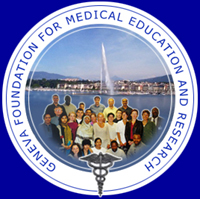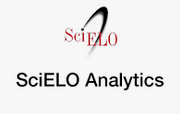Professional improvement in quantitative techniques: a need in Pathological Anatomy
La superación profesional en técnicas cuantitativas: una necesidad en Anatomía Patológica
Nitza Julia Sanz Pupo, Pedro Augusto Díaz Rojas, Manna Daley Pollato
Holguín University of Medical Sciences. Cuba.
ABSTRACT
This article presents arguments about the current needs of pathologists to acquire skills in the use of quantitative techniques for diagnosis and research, and highlights the potential of upgrading to help achieve this knowledge and skills that lead to better professional performance and level of response to the needs of the population.
MeSH: education, medical, graduate, Pathology, analytical methods, education, medical.
RESUMEN
En este artículo se presentan argumentos sobre las necesidades actuales de los patólogos de adquirir competencias en la utilización de técnicas cuantitativas para el diagnóstico y la investigación, y se destacan las potencialidades de la superación para contribuir a alcanzar estos conocimientos y habilidades que propician un mejor desempeño profesional y nivel de respuesta a las necesidades de la población.
DeSC: educación de posgrado en Medicina, Patología, métodos de análisis, educación médica.
Technological advances in the field of biomedicine have led to the introduction of new diagnostic methods and techniques in the field of Pathological Anatomy, simultaneously with improvements and less invasive procedures for obtaining samples for biopsies, cytologies and necropsies, thereby a frank process of dialectical change is experienced. Links are established not only with the cellular and pathophysiological morphological alterations of the pathogenesis of the diseases, but also with the dynamism of the establishment of the concepts from the molecular origin to have a more complete information on the origin, pathogenesis and diagnosis of the diseases of the 21st century.1,2
Within this arsenal of procedures and techniques are the quantitative ones, with their contribution to decrease the variability between different observers that can be generated in the subjective individual interpretation of the morphological characteristics to be evaluated in tissue samples to establish an anatomic-pathological diagnosis.
Fortunately, at the international level every day more criteria are added in favor of the importance of establishing qualitative and semi quantitative parameters in the histopathological assessment that provide more information for the diagnosis and prognosis of a disease, the risk of suffering a malignancy, the prediction and evaluation of tumor regression and responses to treatments and individualization of specific oncological therapy.1,3
In Cuba there is a contradiction between the structuring of the content system related to these techniques in the specialty program4 and the difficulties for its use during the professional performance of the pathologist, reason why the purpose of this research paper is to highlight the usefulness of the professional improvement to provide the specialists with these diagnostic and researching competences.
This subsystem of postgraduate education is considered as the one that allows university graduates to acquire and continuously improve the knowledge and skills required for a better performance in their job responsibilities and functions, their comprehensive cultural development, as well as the construction and improvement of their professional competences.5 According to this referent and what was proposed by González Capdevila et al.6 about its relevance to the extent that it is aimed at solving problems related to the updating and professionalization of human capital, that´ s why It´s proposed the professional improvement as the adequate way for pathologists to reach competences in quantitative techniques, as long as the design of the specialty program is modified.
The responsibility of ensuring this upgrading must be of the accredited hospital institutions for the training of pathologists in close collaboration with the medical university and others that have the required technology and expertise. In this regard, the formation of multidisciplinary groups is important in which, in addition to the diagnostic interpretation of the results obtained in the qualitative and quantitative observations, the treatment of the patients is decided on a consensual basis and research skills are also developed that complement and enable the study and spreading of advances in knowledge, science, technology and art, as established in the postgraduate regulation.7
For the design of the actions of professional improvement in the topic should be taken into account the modalities of part-time and distance learning, the latter propitiated by the digitalization of images and telepathology. Regarding the forms of teaching organization to be used, one or a combination of several of them can be selected. The course, the training and the workshop are feasible and productive if you consider the following proposal of core essential contents, for example:
I. General concepts about optics.
II. Brief introduction to the dimensions and their measurement.
III. The biological image.
IV. The quantitative techniques. Basic concepts.
V. Variables and measurements.
VI. Digitalization of images. Basic equipment in pathological anatomy.
VII. Computing pathology The application of digital images in pathological anatomy and other related sciences.
VIII. Usefulness of quantitative techniques in anatomopathological research and diagnosis.
IX. Interpretation and application of quantitative and semiquantitative results to anatomopathological diagnosis and to research.
X. Use of software for quantitative techniques.
The professional improvement in quantitative techniques responds to an inevitable scientific-technical updating, the development of professional skills and the ability to work in multidisciplinary teams while preserving the autonomy that the pathologist must have in order to maintain the diagnostic efficiency and adapt to the vertiginous changes of technology in order to respond to the health needs of the population.
Declaration of interests
The authors declare no conflict of interest.
BIBLIOGRAPHICAL REFERENCES
1. Llombart Bosch A. La evolución de la anatomía patológica: hacia dónde nos dirigimos. Rev Esp Patol. 2017;50(3):137-139.
2. Subdirección de Estudios de Postgrado. Programas de Postgrado. Especialidades. Anatomía Patológica. [Internet]. Facultad de Medicina. Universidad Autónoma de Nuevo León; 2014. [Citado 10 enero 2017]. Disponible en: http://www.medicina.uanl.mx/posgrado/programas-de%20posgrado/especialidades/
3. Pérez Olvera O, Arellano Balderas S, Rodríguez Martínez HA. Revisión de los métodos estereológicos y su aplicación en biología celular. Patología Rev Latinoam [Internet]. 2012 [citado 5 May 2017];50(2):[aprox. 9 p.]. Disponible en: http://www.medigraphic.com/pdfs/patrevlat/rlp-2012/rlp122b.pdf
4. Dirección Nacional de Postgrado. Programa de la Especialidad Anatomía Patológica. La Habana; Minsap; 2012.
5. Cáceres Diéguez A, Cruz Baranda SS. Evolución histórica de la atención primaria de salud y su repercusión en la superación profesional. MEDISAN [Internet]. 2010 [citado 21 Ene 2012];14(9):[aprox. 8 p.]. Disponible en: http://bvs.sld.cu/revistas/san/vol_14_9_10/san20910.htm
6. González Capdevila O, Mesa Carpio N, González FrancoM. La superación profesional en las universidades de ciencias médicas, tendencias y exigencias actuales. EDUMECENTRO [Internet]. 2013 [citado 21 Ene 2017];5(2):[aprox. 5 p.]. Disponible en: http://scielo.sld.cu/scielo.php?script=sci_arttext&pid=S2077-28742013000200004
7. Ministerio de Educación Superior. Reglamento de Postgrado. Resolución 132/04. La Habana: MES; 2004.
Submitted: January 12 2018.
Accepted: July 5 2018.
Nitza Julia Sanz Puppo. Holguín University of Medical Sciences. Cuba. E-mail: nitzasp@infomed.sld.cu
This article is published under the license Creative Commons
Copyright (c) 2018 EDUMECENTRO










